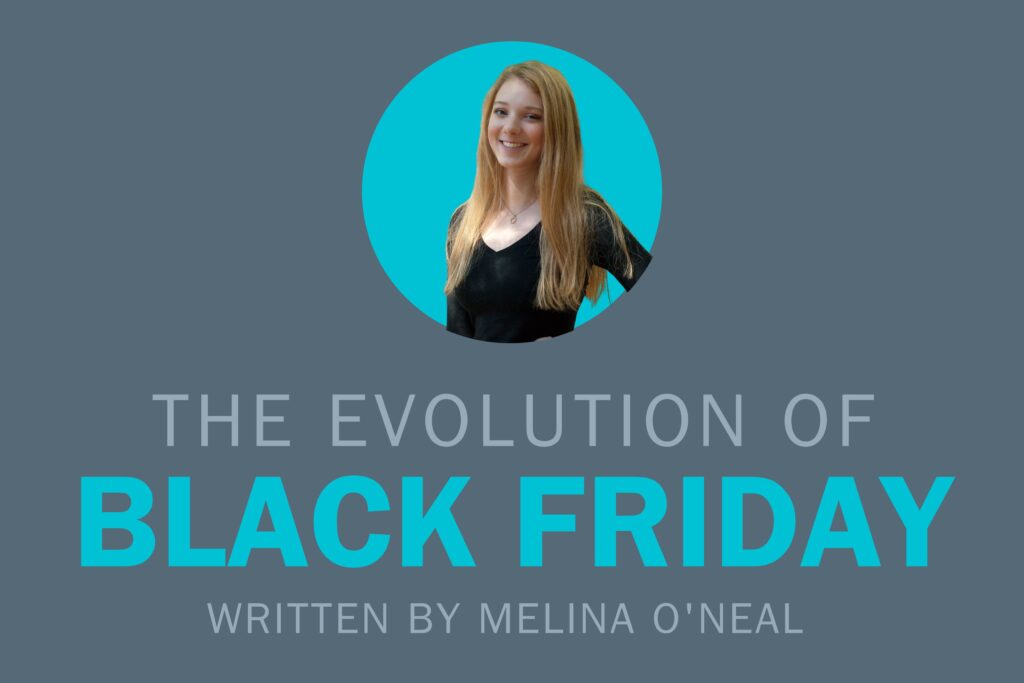The Evolution of Black Friday

The holidays will always be the biggest shopping season of them all. Regardless of whether you participate in the festivities or roll your eyes when Christmas items roll onto shelves in October, Black Friday is the most notable shopping occasion of the season and serves as a renowned tradition for retailers and consumers alike. Despite its consistent success, the nature and value of this day may have changed more than we realized.
History of Black Friday
With over 154.4 million shoppers spending over $8.9 billion spent last year, Black Friday is the most anticipated day in the holiday shopping season. Its namesake is commonly linked to the practice of writing profitable numbers in black ink and losses in red ink in accounting, and Black Friday was a typically profitable day against a possible sea of red. Officially designated in 1952, it is celebrated in the United States on the day after Thanksgiving.
Recent Changes
The inner workings of Black Friday have significantly changed with the pandemic and the rise of online shopping. Traditionally, Black Friday was in-store and Cyber Monday was online. Now, Black Friday encompasses both sectors and begins weeks earlier, losing its one-day brick-and-mortar magic. In 2020, the online tradition was solidified, with the number of online shoppers rising 8% from 2019 to pass the 100 million mark for the first time. Extended deals have become more popular since this shift, and profit growth on Black Friday itself reversed for the first time ever in 2021.
Public relations teams must begin planning far in advance to prepare for this season, which is often the most important of the year. New product releases are often avoided during this period because the challenge of competing with the holidays for attention arises — especially if a company runs both the Black Friday and holiday season campaigns simultaneously. With the crowded market of retailers fighting for attention, many retailers may take creative risks or investments to stand out from the masses.
Inflation may affect this year’s profits, with some consumers opting to spend more on necessities like gas and groceries over gifts. Retailers may slash prices to move inventory after miscalculating what shoppers want post-pandemic. Spending is also more spread out with extended campaigns or the five-day stretch from Thanksgiving to Cyber Monday. Compared to 2021, online sales are only expected to grow 1% on Black Friday, but increase by 5.1% on Cyber Monday, indicating a major change in customer preferences and shopping habits.
Recent Black Friday Trends
As Black Friday itself gradually decreases in prominence, some companies are taking advantage of the day for other ventures. In October, Amazon announced they will be streaming the NFL’s first Black Friday game as an extension of their exclusive agreement for Thursday Night Football on Prime Video. Their Global Head of Sports, Jay Marine, describes it as a “gift for football fans across the county.” While this will detriment some retailers, Amazon’s unique online-only setup allows them to benefit more by this evolution. It will draw publicity to Amazon while being relatively unchanging towards their customers’ shopping habits.
Target prepares for the holiday shopping season by compiling gift guides of products compatible with specific groups of consumers. These collections are customized by occasion (white elephant, stocking stuffers), demographics (families, parents, teachers, event hosts), and interest groups (black owned & founded, monogram, cozy gifts). With this tactic, customers can discover items they didn’t know they needed for themselves or their loved ones.
Some companies are known to inject humor into their Black Friday campaigns, gaining attention through publicity stunts instead of deep price cuts. Cards Against Humanity is known for its creative approaches to the holiday. In 2018, their “99% off Sale” sold products at 1% of their original price. The catch was that to make the products 99% off, they comically inflated the “original” price of the items. For example, they upscaled their card game to $20,000 to make the price of $20 seem like a jokingly great deal. They even sold unrelated items, such as a $20 bill, an engagement ring, a casket, and a life-size Orlando Bloom cutout. Fans loved this, and the company gained recognition and sales without a real price cut on their product.
While many holiday traditions remain the same, Black Friday is still going through some massive transformations, which includes its planning element. Public relations efforts must shift in style and length with the changing shopping landscape. Keep a critical eye on retailers’ Black Friday campaigns when shopping this season to see what campaigns may inspire you in the future.

Melina O’Neal is a third-year Media & Culture student at West Chester University of Pennsylvania with a minor in Digital Marketing. She currently interns in public relations and external communications. With PRSSA, she serves as a District Ambassador, National Publications Committee member, and treasurer for her collegiate Chapter. You can connect with Melina via LinkedIn.
